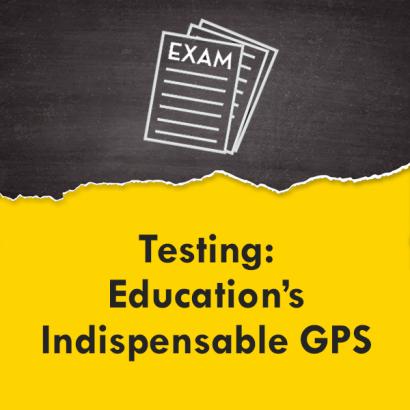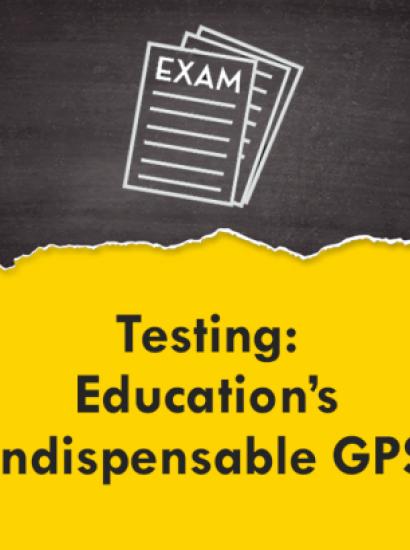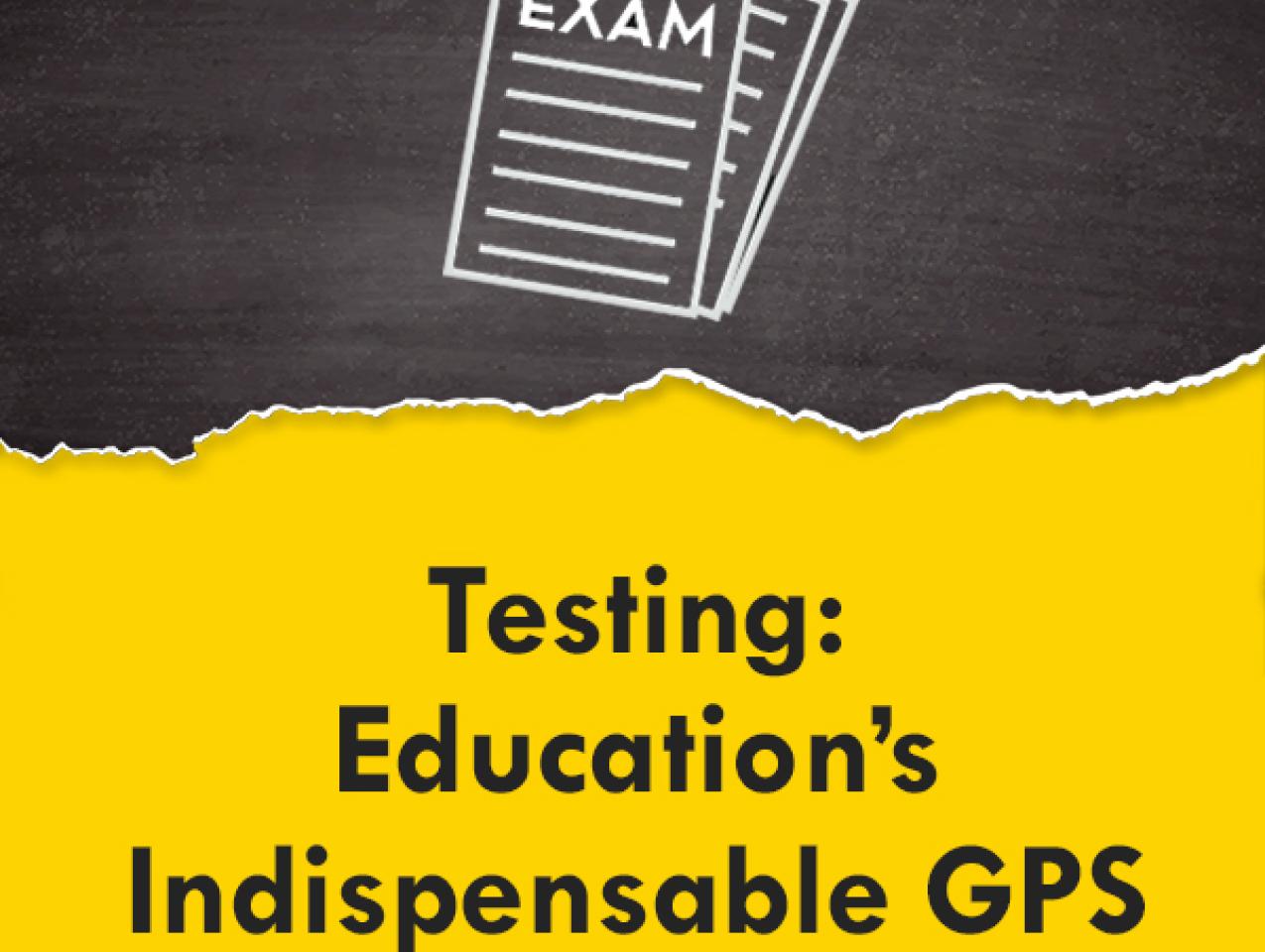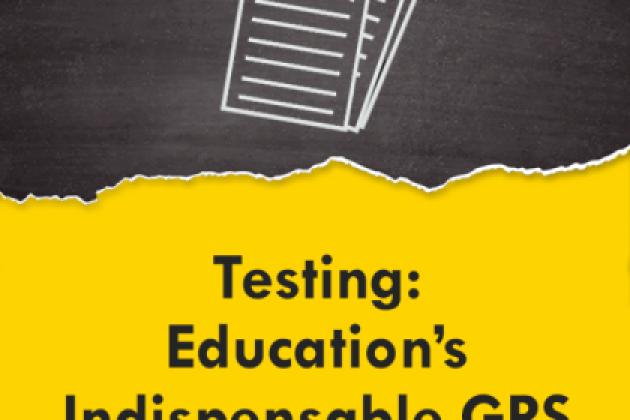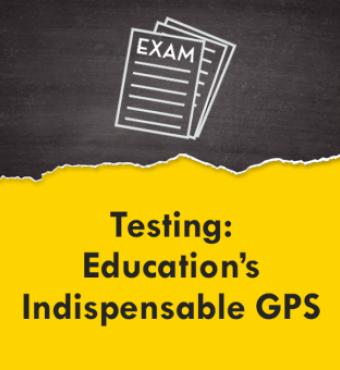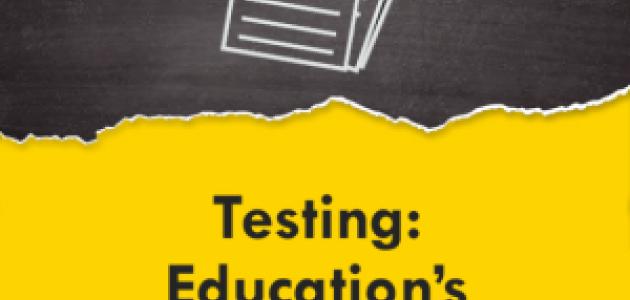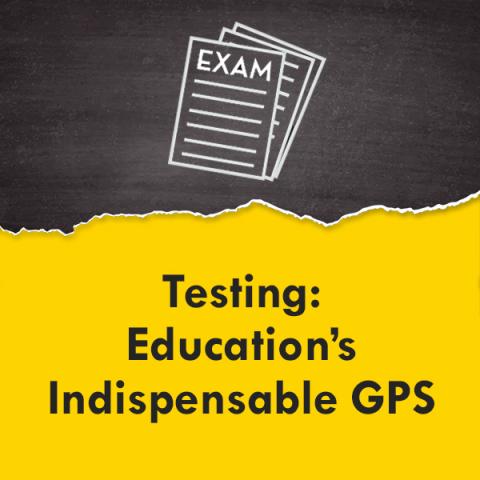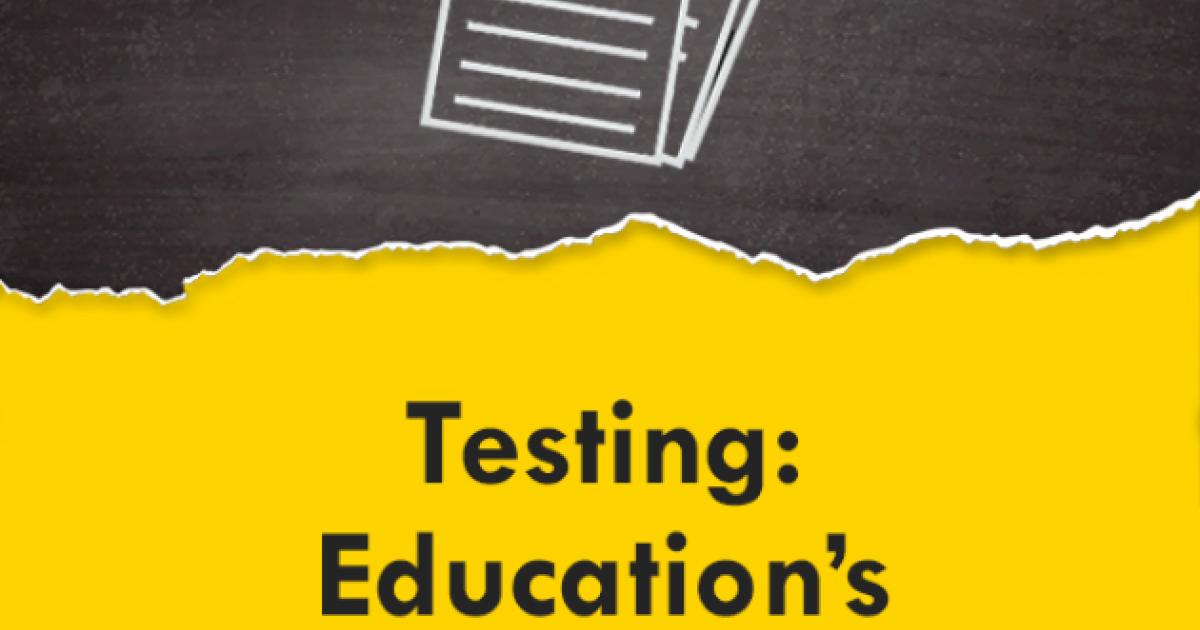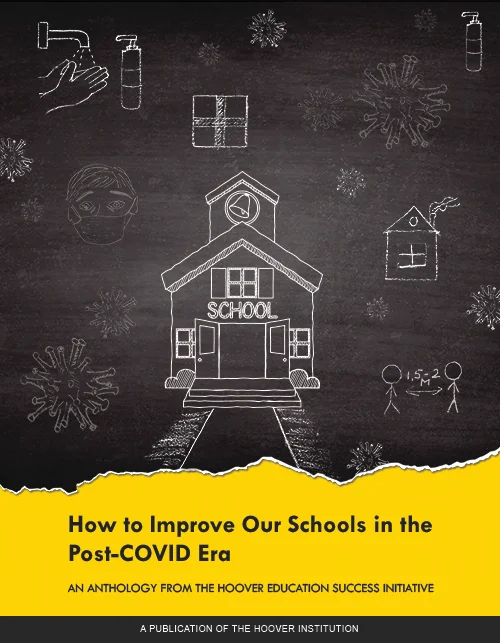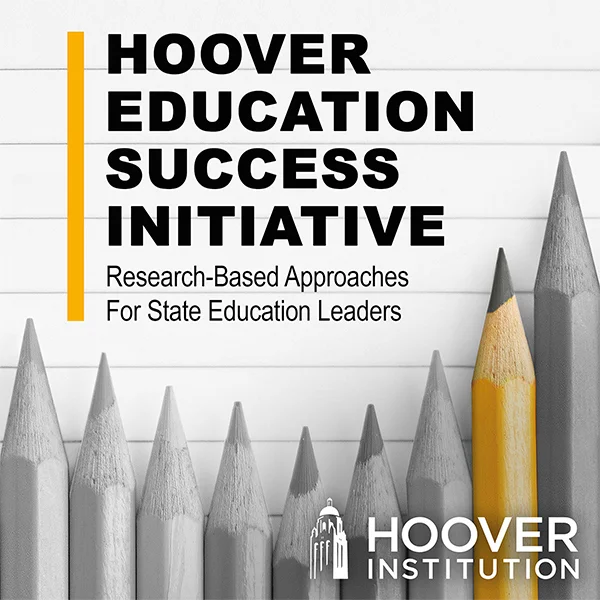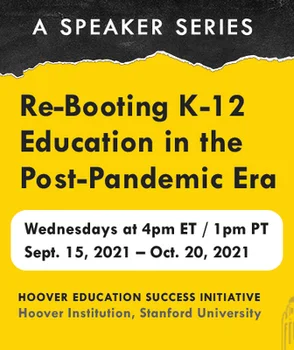Recommendations
- ✏1 Administer spring 2021 state assessments to as many students as possible, with whatever adaptations or modifications may be required. Don’t seek waivers. If spring testing proves impossible, seek approval to shift assessment to summer or opening of school in fall, with results back as soon as possible. (There may be diagnostic value in testing in both spring and fall, particularly if many students attend summer school in 2021.)
- Consider how best to extract actionable information from this year’s assessments, which may be significantly different from analyses done in prior years.1
- Use the results for monitoring, diagnosing, and strategizing for achievement, remediation, and school improvement, but don’t use pandemic-year results for “high-stakes” accountability. So long as data are used for diagnosis and remediation, the temptation to cheat will be minimal; hence, at-home testing is an issue of feasibility, not test security. Federal recovery funds directed at schools may help with feasibility this year as well as with long-term technology improvements.
- Return as soon as possible—spring 2022—to regular assessment cycles (per the Every Student Succeeds Act [ESSA]), with achievement, growth, and gaps calculated, school report cards issued, and schools held accountable for performance.
- Seize this extraordinary moment to improve testing technology and methods, both remote and adaptive. Launch an overdue transition to adaptive testing, which becomes more important as gaps widen and variability increases. Remote testing becomes more possible based on pandemic experience plus additional technology.
- Develop creative ways to engage educators and parents in renewed commitment to learning, assessment, and accountability, and openness to new ways of doing this, and build political support for ensuring that it’s done. The crucial alliance includes business and civil rights leaders, too. But none of this happens without forceful leadership from the top: the governor, senior legislators, the state “chief,” and others who wield power and influence and have ready access to the bully pulpit.
The Challenges We Face
✏2 Along with everything else in the lives of Americans, the COVID-19 pandemic has grievously interrupted both ESSA-mandated state assessments and states’ own testing regimes (including end-of course [EOC] exams, reading guarantees, high school exit exams, etc.) That’s a result of spring 2020 school shutdowns and most schools’ inability to gain accurate data on achievement of students who aren’t physically present in their classrooms. This has damaged results-based school accountability throughout the system. More urgently, it creates a huge information vacuum for teachers, school leaders, and policy makers regarding pupil achievement, achievement gaps, COVID-19 losses, and schools’ success (or not) in mounting virtual education. All of this is occurring even as we know from multiple sources that many students are falling further behind, gaps are widening, and most schools and districts have faltered both at getting them back into school and at effectively delivering distance learning.
Some schools have done better in pivoting to remote instruction.2 A few districts, states, charter networks, and private organizations have worked valiantly to fill the data void with online testing regimes.3 Yet the data vacuum is extensive, particularly in the dearth of objective third-party data on student learning, growth, and gaps. Excellent efforts to fill that vacuum during the pandemic, such as NWEA’s MAP testing program, have yielded valuable information to some schools and districts but have had limited reach (and their data don’t match those from state assessments).
At this writing, spring 2021 assessments are complicated. On February 22, the Biden administration advised state leaders that ESSA-mandated assessments should be administered and that the Education Department would not be issuing a “blanket waiver” such as former secretary of education Betsy DeVos did in spring 2020. The same guidance made clear that the results would not be used this year for accountability purposes such as identifying low-performing schools for possible intervention or assistance. It also offered states “flexibility in the administration of statewide assessments.” Examples included shortening the tests, letting students take them remotely, and extending the testing window. Nor was the waiver option entirely rejected: states still have the option of requesting waivers if their circumstances warrant, although not without seeking public comment before submitting such a request.
It’s known that some states intend to seek such waivers and that leaders in other states are coming under pressure from some education groups to do likewise. A quest for “loopholes” is already under way in many places, even as some civil rights groups push for the assessments to be given as intended.4[4]This creates a confused and confusing picture, including the possibility that some states may end up not testing at all while others may so alter their assessments or their testing windows as to confound future efforts to compare results with those from 2019 (and other years), as well as efforts to estimate achievement growth (or lack thereof) during the pandemic. Maryland, for example, has already moved to fall 2021 assessments—and to shorten its tests.5 When will those results be available? What past and future results can they readily be compared to?
Deepening the confusion, there are reports that a large number of parents may “opt out” of having their children tested in spring 2021, particularly if their schools have not otherwise been open or they’ve chosen to study remotely.6[6]✏3 Meanwhile, the National Assessment of Educational Progress (NAEP) has found it impossible to administer its ESSA-mandated 2021 tests of reading and math in grades four and eight and has deferred them for a year.7 This creates something of a paradox, as the federal government delays its own test while (so far) requiring states to administer theirs.8
Mounting Urgency
No system can function well without data showing the effectiveness of its own functioning. That’s as true of education systems as of transportation systems, manufacturing systems, delivery services, vaccine distributions, and others. Attempting to run a state or local school system, a charter school network, even an individual school, without reliable information about student achievement, achievement gains, and learning gaps is like trying to drive between two unfamiliar towns with neither GPS nor road maps. In fact, it’s more like attempting to do that at night without streetlamps, road signs, or headlights. This has never been truer than when schools across the country struggle to reopen after the protracted pandemic-forced shutdowns, a year and more during which children have had radically different education experiences and during which we have ample evidence of stalled achievement, severe learning losses, widening gaps, and growing inequities, in addition to major threats to children’s social, emotional, and physical well-being.
To attempt to reboot students’ education without solid data on where they stand, what they have and haven’t learned, how extensive are the losses, and for which students, would be to handicap the educators (and parents) who are charged with helping them get their educational lives back on track. The variance in pupil performance within any classroom, grade level, or school has almost surely expanded during the shutdown. and it’s important to identify, quantify, specify, and deal with that unfortunate development.
Lurking in the background, too, is a strategic and political problem for the education system itself: well before the pandemic hit, American K–12 education faced an anti-testing movement among many teachers and parents as well as an increasing number of teacher-aligned political figures. That movement has strengthened during the coronavirus-induced testing-and-accountability holiday.9 If we continue for another year or more without testing, or with testing that yields noncomparable results, our public education system may come to resemble the person who was thrown from a horse and, instead of getting right back on, failed to remount for such a long time as to lose the courage and capacity to return to the saddle. Some important things we do in education we have learned to do as a matter of routine. Break that routine and we may fail to muster the will to resume them.
This is doubly worrying because American public education was making some gains pre-pandemic, particularly for poor and minority students. No, it wasn’t nearly enough. In fact, recent years have seen some declines at the low end of the achievement spectrum as well as flat scores in high school. Achievement gaps haven’t significantly narrowed even as the pursuit of greater equity has become a more compelling national priority. Today, however, COVID-induced losses are exacerbating these worrying trends—and the absence of 2020 assessment data will mask the problem and confound the solution unless states act urgently to correct the situation in 2021.
What We Know
✏4 Both experience and research have shown that systematic third-party assessment of student learning and school performance leads to transparency about key elements of pupil achievement and school effectiveness.10 Transparency alone yields some reforms and learning gains. That yield rises—and equity is advanced—when the data are disaggregated in ways that enable the performance of student subgroups to be examined and compared. Such analysis reveals gaps that may otherwise be masked by aggregate or average performance—and almost everyone now recognizes that revealing those gaps and making school performance truly transparent was perhaps the single greatest benefit from the No Child Left Behind (NCLB) Act, one that continues under the Every Student Succeeds Act—yet one that swiftly vanishes into a data vacuum.
NCLB brought other benefits, too. Research indicates that it led to gains for many students, mostly in the early grades, although its potential was oversold and other features of it eventually fed into a backlash.
✏5 This is among many examples of assessment data and transparency leading to better schools and higher achievement, both in the United States and far beyond. As the present author and Eric Hanushek recently explained in the journal of the National Association of State Boards of Education, “International evidence indicates that countries with testing programs that allow for external comparisons have students who do better on international achievement tests.” Moreover, “Many countries develop testing for graduation and student placement into higher education or other institutions. . . . The use of such exams has generally shown beneficial effects across countries. Importantly, the value of local school grades rises when there is an external test that can be used to calibrate the meaning of those grades.”11[11]Transparency about school performance also fosters powerful education reforms such as school choice while giving feedback to families seeking to locate a home and essential information to taxpayers. It also provides invaluable data for parents whose understanding of their children’s current performance and future prospects is otherwise limited to what teachers and school leaders want them to know. That’s why assessment data need to be analyzed and reported at district and school levels as well as for key subgroups.
There’s encouraging evidence that most schools will be able to make accurate estimates of both achievement and growth despite the one-year data gap caused in spring 2020. But few schools will be able to do that if there’s a second testing hiatus.12 In other words, not testing in 2021 in ways that yield data that can be compared with assessment results from earlier and later years would cause a major setback for education reform, for accountability, for equity, and for tens of millions of pupils.
Pitfalls Joined to Opportunities
Most obviously, states and districts should avoid another year of missing or noncomparable data. As a team of analysts at Bellwether Education Partners explains,
The stakes are incredibly high for students. Estimates of learning loss due to the pandemic paint a frightening picture for all but the most advantaged students. Those in the highest socioeconomic quintile seemed to have adapted fairly well to distance learning, but students with average or low socioeconomic status are likely to sustain major learning losses. . . . Using the operational uncertainty of the [current] year as an excuse to suspend assessment and accountability would cripple our ability to understand the impact of COVID-19 on student learning and imply that schools should not be held responsible for the work they do this year in mitigating and overcoming that impact.13
That’s why state leaders should resist the temptation to avoid measuring achievement or to alter their assessments in ways that make the results noncomparable to those of other years, even as they may extract valuable additional information from the performance of this year’s test-takers (and those who do not participate in this year’s assessment).14
They should, of course, also resist the temptation to make excuses or ignore the challenges and changes that the data point to. At the same time, they—and we—must remind ourselves of how many things that are important to know about schools and student learning cannot be gauged by tests alone. That’s always been true, but recent shutdowns have underscored it, both on the academic front and on other essential dimensions such as children’s social and emotional condition and their readiness for citizenship. Because of mounting evidence that school shutdowns have done grievous harm on the social and emotional learning level and citizenship front, as well as the academic front, the challenge ahead is more compelling than ever.15
Beginning prior to the pandemic, many states, districts, scholars, and independent organizations have sought broader, deeper, subtler, and more sensitive indicators of school effectiveness and student success.16 It’s proven hard to find many such indicators that are also reliable and not vulnerable to manipulation, but this is an important quest, its urgency underscored at the present time.17 The post-pandemic K–12 “reboot” may be a golden opportunity to renew and redouble the quest for such indicators. To be avoided, however, is the downplaying or shunning of existing measures of academic achievement and growth such as had already been developed in standardized assessments like those paused in 2020. A fundamental mission and mandate of K–12 education remains the equipping of every child with fundamental skills and knowledge in vital subjects.
Even those indispensable tests can be modernized, however, and made more revealing, perhaps also speedier and less intrusive. That entails more than just putting them online to make them accessible beyond the classroom. Particularly when test results are once again used for accountability purposes, issues of test security and integrity will need to be resolved.18 Similar technologies—and perhaps the application of artificial intelligence—should make it possible to evaluate and score them faster and more accurately.
The enormous amount of federal “recovery” funding that’s beginning to pour down on states, districts, and schools could underwrite much of this transformation. In the near term, it could also be used to deliver education resources directly to families.
✏6 Transforming these assessments into adaptive formats also holds great promise. It’s not an overnight change—test vendors, for example, will need to create many more items and build complicated algorithms—but it’s well worth launching. Done properly, it will reduce testing time, minimize pupil frustration (caused by questions that kids find ridiculously simple or utterly daunting), and yield more precise data for teachers and school leaders. Those data will prove especially valuable in educating low- and high-achievers, youngsters for whom “standardized” tests aimed at the middle of the class are clumsy and imprecise instruments.
Conclusion
✏7 We urge state leaders to recommit to achievement, transparency, and data-driven education for students (and educators). We urge them to insist on spring 2021 (or possibly fall 2021) assessments, lest their schools lose essential information about achievement and find it impossible to estimate growth.
The key goals are to recover from school closings, narrow achievement gaps, advance equity, and modernize the education delivery system. Visionary leaders should also seize the moment to develop improved and more flexible assessment instruments. Online, remote, and adaptive testing will sweep in more students and yield better information. Building such assessments into learning systems will deliver better information in real time to teachers. Technology should enable an integrated suite of formative and summative assessments, with other resources made available to supplement what teachers can do, both in person and remotely.
Most immediately, we urge state leaders not to discard their GPS. That means taking every possible action to assure that spring 2021 assessments yield solid information for the maximum number of students, information that can be compared with previous and subsequent years, information that will advise educators about their pupils’ immediate needs and that, in the long run, will make it possible to resume results-based school accountability. ✏8








